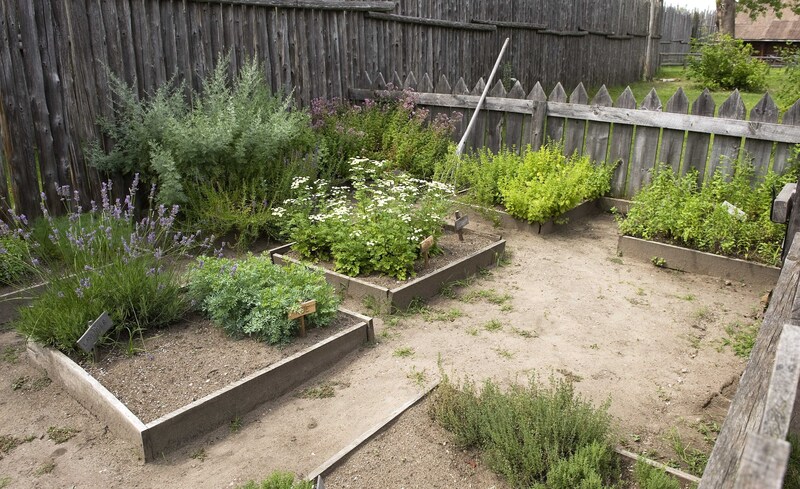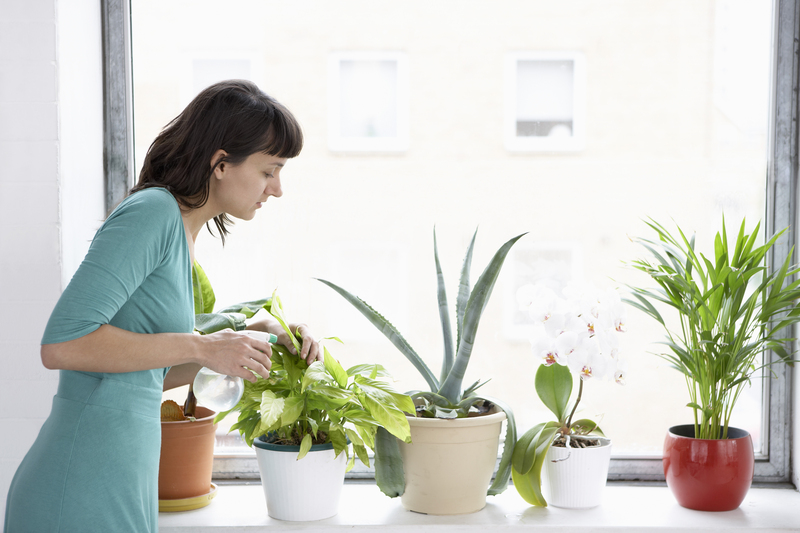Unlock Your Orchid's Potential with Proper Care
Posted on 22/05/2025
Unlock Your Orchid's Potential with Proper Care
Orchids are renowned for their stunning beauty, exotic charm, and air of mystery. However, many plant enthusiasts feel intimidated by these delicate houseplants, believing them to be too difficult to nurture at home. The truth is, with proper orchid care, anyone can coax their orchid to thrive, bloom, and flourish year-round. Whether you're a novice or a seasoned gardener, unlocking your orchid's potential is simply a matter of understanding its unique needs and learning a few specialized tips.
Understanding Your Orchid: More than Just a Pretty Flower
Before diving into specific care routines, it's important to get to know your orchid. There are more than 25,000 naturally occurring species and over 100,000 hybrids, but thankfully, most orchids available for home growers fall into just a few main types.
- Phalaenopsis (Moth Orchid): The most common and beginner-friendly, boasting long-lasting, elegant blooms.
- Cattleya: Known as the "Queen of Orchids," appreciated for their large, fragrant flowers.
- Dendrobium: Features a vast range of sizes and shapes, often with vibrantly colored petals.
- Oncidium (Dancing Lady): Famous for their sprays of bright, often yellow flowers.
- Vanda: Require high humidity and bright light; ideal for experienced growers.
Understanding what species or hybrid you own is the first step to optimal orchid care and unlocking its full potential.

The Fundamentals of Proper Orchid Care
1. Selecting the Ideal Spot for Your Orchid
Location is crucial for unlocking your orchid's potential. Orchids are generally tropical plants, thriving in warm, humid environments with plentiful, but indirect, light.
- Light: Most orchids prefer bright, filtered light. East- or south-facing windows are ideal, but avoid harsh, direct sunlight that can scorch the leaves. If your orchid's leaves are dark green, it may not be getting enough light; reddish or yellowish leaves can indicate excessive light.
- Temperature: Orchids generally enjoy daytime temperatures between 65-80?F (18-27?C) and a nighttime drop of about 10-15?F (5-7?C) to trigger blooming. Be mindful of drafts and abrupt temperature changes.
- Humidity: Orchids thrive in 40-70% humidity. Increase humidity with a room humidifier, pebble tray, or frequent misting during drier months.
2. Mastering the Watering Technique
Overwatering is the number one cause of orchid decline. To ensure optimal orchid health, follow these guidelines:
- Water only when the top inch of the potting medium feels dry to the touch.
- Soak thoroughly, allowing excess water to drain completely and never leave your orchid sitting in water.
- Water requirements vary by season; orchids need less water in cooler, darker months and more during active growth and blooming periods.
- Use lukewarm, low-mineral water. Rainwater or distilled water works best.
Tip: It is better to underwater orchids than to overwater them. Root rot is a common result of excess moisture.
3. Feeding for Flourishing Blooms
To truly unlock your orchid's blooming potential, regular, balanced fertilization is essential.
- Use a fertilizer designed specifically for orchids, typically labeled 20-20-20 or "balanced."
- Fertilize every 2-3 weeks during their active growing season (spring and summer), reducing frequency in fall and winter.
- Always dilute fertilizer to half the recommended strength to avoid root burn.
- Flush the pot with plain water monthly to remove fertilizer salts that can accumulate in the growing medium.
The Right Potting Medium and Repotting Practices
Choosing the Best Potting Mix
Orchids do not grow in regular potting soil. To unlock their true potential, they need airy, fast-draining media that mimic their natural growing conditions. Common orchid mixes include:
- Bark chips: Provide excellent airflow but may require more frequent watering.
- Sphagnum moss: Retains moisture well--ideal for smaller orchids or those in dry environments.
- Perlite or charcoal: Additional ingredients for improved drainage and aeration.
Choose a mix based on your species and your home environment's humidity levels.
When and How to Repot Your Orchid
Your orchid will outgrow its pot or its mix will break down over time. Repot orchids every 1-2 years, or when you notice roots growing out of the container or the medium looking soggy or sour-smelling.
- Gently remove the orchid and shake off old, decayed mix.
- Trim dead or mushy roots with sterilized scissors.
- Place the orchid in a clean pot with fresh mix, ensuring the roots are surrounded but not suffocated.
- Water lightly and keep in indirect light for the first week after repotting.
Encouraging Beautiful Bloom Cycles
What Triggers Orchids to Bloom?
Unlocking an orchid's blooming potential comes down to mimicking the "stress" cues of their native environments. Key triggers include:
- Temperature drop at night: Some orchids require a 10-15?F reduction at night to initiate blooming.
- Proper light: Increase indirect sunlight in the weeks before anticipated bloom season.
- Resting period: Certain orchids need a dry, cool period post-bloom to recharge.
Be patient; some species only rebloom once a year, while others may flower multiple times with proper care.
How to Care for Orchids After Flowering
Post-bloom orchid care is just as vital for robust, future growth:
- Phalaenopsis: Trim flower spikes above a node (joint) to encourage a second bloom spike, or cut spikes at the base if dried.
- Other orchids: Prune spent flower stalks cleanly, allow the plant to rest, and resume normal care.
- Continue feeding and watering: But reduce both slightly during the rest phase.
Common Orchid Problems and Solutions
- Yellow leaves: May indicate overwatering, excessive light, or natural aging. Check roots and adjust care accordingly.
- Wrinkled leaves: A sign of underwatering or root loss. Inspect roots and adjust watering schedule.
- Brown/black roots: Root rot from overwatering; trim damaged roots and repot in fresh, dry mix.
- Failure to bloom: Insufficient light, lack of nighttime cooling, or improper feeding. Adjust conditions and be patient.
- Pests (mites, mealybugs, scale): Clean leaves with soapy water or use horticultural oil; isolate affected plants.
Preventative Care is Key
The secret to unleashing your orchid's potential lies in consistent, preventative care:
- Inspect plants weekly for signs of distress or pests.
- Maintain a clean growing area to avoid fungal or bacterial infections.
- Quarantine new orchids before adding them to your collection.
Advanced Orchid Care Tips for Enthusiasts
1. Air Circulation Matters
Orchids, especially those in humid environments, benefit from gentle air movement. Use a small fan set on low in your orchid area to prevent fungal issues and encourage strong growth.
2. Orchid Mounting
Want to really unlock that natural aesthetic? Try mounting your orchid on a piece of wood or cork, mimicking their natural epiphytic habit. Ensure high humidity and regular misting for mounted orchids.
3. Flower Spike Support
As spikes (flower stems) grow, use stakes and soft ties to gently support them. This keeps blooms upright and protects fragile stems.

Frequently Asked Questions About Unlocking Orchid Potential
How long does it take for an orchid to rebloom?
Depending on the species, reblooming can take anywhere from a few months to a year. Phalaenopsis often rebloom within 6-12 months, while others have longer rest periods.
Is it normal for orchid roots to show above the pot?
Yes! These aerial roots absorb moisture and nutrients from the air -- a sign of a healthy orchid.
What is the best orchid for beginners?
Phalaenopsis orchids (moth orchids) are the easiest and most forgiving for beginners, making them the best starting point for unlocking orchid potential.
Should I cut the flower spike after blooming?
For Phalaenopsis: Trim above a visible node to encourage a new spike, or cut at the base if dried. For others: Cut spent spikes at the base.
Conclusion: Unlocking Your Orchid's Potential is Within Reach
With a tailored approach to orchid care, you can enjoy years of vibrant blooms, healthy foliage, and the satisfaction of nurturing a plant as unique as it is captivating. Remember to provide the right light, water, feeding, and environment specific to your orchid's variety. Practice patience, observe your plant's responses, and treat problems early. If you do, your orchid will reward you with lush leaves, regular flowering, and a stunning display that's sure to impress.
By following these expert tips, you'll be well on your way to unlocking your orchid's full potential -- and turning your home into a haven of exotic beauty.

